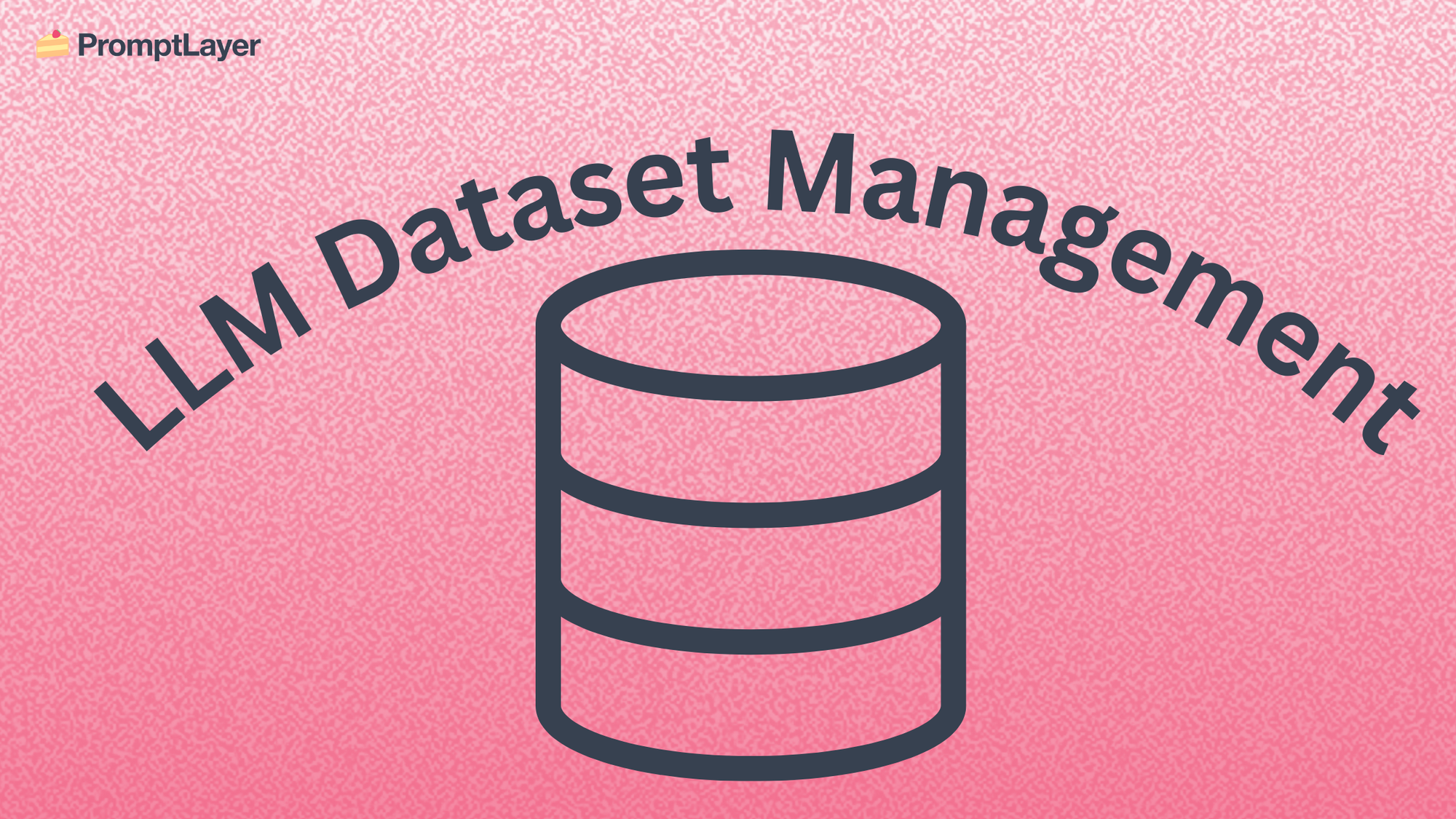The Best Tools for LLM Dataset Management

Large language models (LLMs) are only as good as the data they are trained on. Effective dataset management is crucial for improving model accuracy, efficiency, and adaptability. From curating high-quality datasets to versioning and optimizing prompts, robust dataset management tools play a key role in fine-tuning AI systems for better performance.
This article explores some of the best tools available for managing LLM datasets, starting with PromptLayer, a leading platform in this domain, followed by other notable alternatives.
PromptLayer
PromptLayer is a premier platform for LLM dataset management, specifically designed for prompt engineering and optimization. With an intuitive interface and a powerful suite of features, it enables users to manage, test, and refine prompts efficiently.
Key Features
| Feature | Description |
|---|---|
| Prompt Versioning | Allows users to test different prompt versions and compare performance, ensuring optimal results. |
| Collaboration with Experts | Facilitates non-technical stakeholders’ involvement in prompt engineering, accelerating development and reducing costs. |
| Prompt Evaluation | Provides tools to rigorously test prompts using AI and human evaluators before deployment. |
| Usage Monitoring | Tracks how LLM applications interact with datasets, revealing trends and potential areas for improvement. |
| Historical Backtesting | Enables users to assess new prompt iterations against historical data, ensuring continuous enhancement. |
| Dataset Management | Allows users to create datasets from LLM request history or uploaded JSON/CSV files, incorporating metadata, tags, and response tracking for deeper evaluation. |
| Advanced Filtering | Enables filtering datasets by time range, metadata, and specific prompt templates, ensuring high customization and relevance. |
Pros
- User-friendly interface with visual tools for prompt management.
- Comprehensive dataset tracking to optimize AI training.
- Supports a wide range of AI models.
- Fosters collaboration between technical and non-technical users.
- Robust monitoring and evaluation tools.
- Flexible dataset creation and filtering for refined model testing.
Cons
- Can be costly for high-volume usage.
- Some advanced features require a learning curve.
Use Cases
Gorgias uses PromptLayer to automate large-scale customer support efficiently. Speak accelerates language curriculum development with its collaborative prompt engineering features. ParentLab customizes AI responses for personalized user interactions.
Sign up and try PromptLayer here.
Labelbox
A cloud-based platform for data annotation and AI model lifecycle management, Labelbox is widely used for training datasets in machine learning.
Strengths
- Robust data labeling and annotation capabilities.
- Supports collaborative labeling and quality control tools.
- Integrated model training workflow.
Weaknesses
- Less focus on prompt engineering.
- Primarily geared towards broader machine learning applications.
Comparison to PromptLayer: While Labelbox is excellent for dataset annotation, PromptLayer is superior in prompt engineering and optimization for LLMs.
Kili Technology
Kili Technology is a versatile data labeling platform supporting multiple data formats, including text, images, videos, and PDFs.
Strengths
- Comprehensive annotation tools for diverse data types.
- Quality management features to ensure clean training data.
- Seamless cloud storage and ML stack integration.
Weaknesses
- Broader focus on general AI datasets rather than LLM-specific prompt optimization.
Comparison to PromptLayer: Kili excels in data annotation, but PromptLayer specializes in prompt refinement for LLMs.
Weights & Biases (W&B)
W&B is an MLOps platform designed for tracking, visualizing, and managing machine learning experiments, including LLM training.
Strengths
- Comprehensive experiment tracking for ML projects.
- Automated insights to fine-tune models.
- Supports large-scale AI workflows.
Weaknesses
- Not specifically tailored for prompt engineering.
- More general-purpose compared to LLM-specific tools.
Comparison to PromptLayer: W&B is a powerful MLOps tool, whereas PromptLayer is more specialized in prompt engineering for LLMs.
Deepchecks
Deepchecks is an open-source tool for testing and validating ML models and datasets, ensuring their reliability and efficiency.
Strengths
- Comprehensive NLP model testing.
- Open-source and highly customizable.
- Continuous monitoring for data quality assurance.
Weaknesses
- Broader focus on model validation rather than prompt engineering.
Comparison to PromptLayer: Deepchecks is ideal for model validation, while PromptLayer is designed for prompt engineering and dataset optimization.
Final Thoughts
The right dataset management tool can make a significant impact on LLM performance. While Labelbox, Kili Technology, W&B, and Deepchecks all provide valuable features for data labeling, tracking, and validation, PromptLayer stands out for its targeted focus on prompt engineering. Its capabilities in prompt versioning, evaluation, and optimization make it a powerful tool for LLM dataset management, ensuring that AI models generate more accurate and contextually relevant outputs.
For developers and organizations focused on refining AI prompts and improving LLM-driven applications, PromptLayer remains the top choice.
About PromptLayer
PromptLayer is a prompt management system that helps you iterate on prompts faster — further speeding up the development cycle! Use their prompt CMS to update a prompt, run evaluations, and deploy it to production in minutes. Check them out here. 🍰



